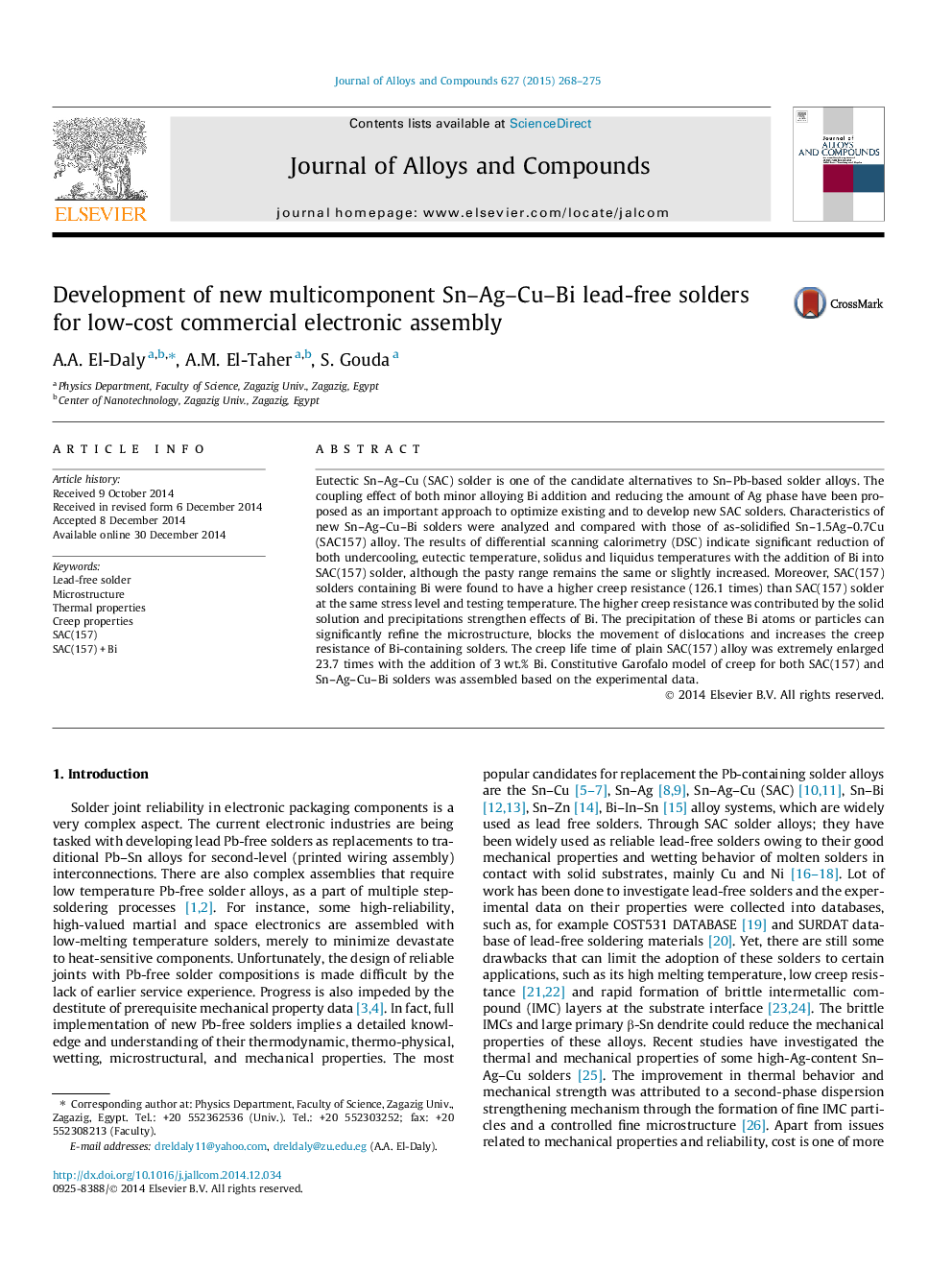| Article ID | Journal | Published Year | Pages | File Type |
|---|---|---|---|---|
| 1610008 | Journal of Alloys and Compounds | 2015 | 8 Pages |
Abstract
Eutectic Sn-Ag-Cu (SAC) solder is one of the candidate alternatives to Sn-Pb-based solder alloys. The coupling effect of both minor alloying Bi addition and reducing the amount of Ag phase have been proposed as an important approach to optimize existing and to develop new SAC solders. Characteristics of new Sn-Ag-Cu-Bi solders were analyzed and compared with those of as-solidified Sn-1.5Ag-0.7Cu (SAC157) alloy. The results of differential scanning calorimetry (DSC) indicate significant reduction of both undercooling, eutectic temperature, solidus and liquidus temperatures with the addition of Bi into SAC(157) solder, although the pasty range remains the same or slightly increased. Moreover, SAC(157) solders containing Bi were found to have a higher creep resistance (126.1 times) than SAC(157) solder at the same stress level and testing temperature. The higher creep resistance was contributed by the solid solution and precipitations strengthen effects of Bi. The precipitation of these Bi atoms or particles can significantly refine the microstructure, blocks the movement of dislocations and increases the creep resistance of Bi-containing solders. The creep life time of plain SAC(157) alloy was extremely enlarged 23.7 times with the addition of 3Â wt.% Bi. Constitutive Garofalo model of creep for both SAC(157) and Sn-Ag-Cu-Bi solders was assembled based on the experimental data.
Related Topics
Physical Sciences and Engineering
Materials Science
Metals and Alloys
Authors
A.A. El-Daly, A.M. El-Taher, S. Gouda,
